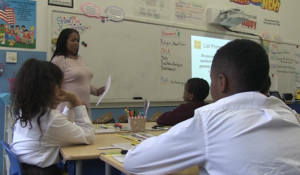08.09.21New Video: Jill Murray Models What To Do, Anonymous Individual Correction and Radar

Schools and classrooms are opening across the country in the coming weeks and amidst the uncertainty about masks and the like, there’s the enduring question that takes on double-weight after pandemic disruptions: How do we create vibrant positive and productive classroom cultures that harvest attention and help students succeed?
With that in mind I’m happy to share this short but instructive video of Jill Murray, who teaches at Sacred Heart Elementary, part of Partnership Schools, which runs parochial schools in NYC and Cleveland.
In the clip you can see Jill quite beautifully link three foundational techniques that make for successful classroom cultures.
1) She gives a very clear What to Do directions. One of the most common reasons why students are not engaged productively in classroom tasks is because our directions aren’t clear. But Jill’s are direct and clear. “Move your board to the side,” she says in a warm voice, identifying a concrete and observable action. And then she doesn’t say anything else. If she did she might distract students from the task or dilute their focus. As students follow the direction she adds: “And then all eyes on me.” Again, concrete and observable. One thing at a time.
2) She then scans for follow-through after the direction. Prevention is always better than correction and one reason students might not follow through on a clear direction is that the teacher doesn’t communicate that it’s important to do so by looking to see whether students have or not. But you can see Jill here lift her chin slightly and scan back and forth across the room to show that she cares and notices whether students are doing what’s required of them. This makes it far more likely that they will. Now and n the future.
3) Turns out a couple of students are a bit slow to follow-through. It’s important to notice this and to set higher expectations but in a humane and thoughtful way. So Jill uses an Anonymous Individual Correction. “Waiting for two…” she says, making it clear that a couple of students need to move a bit faster but preserving their anonymity. They know she’s aware that they need to work harder to keep up but also that she is keeping that struggle private. She’s setting expectations without calling anyone out. When the students catch up she says ‘thank you,’ which expresses civility and cordiality but also makes it clear that the students have, in fact, successfully caught up. Now everyone is with her and away they go.
It’s lovely work. So simple and so elegant and so effective in making sure that every student stays with the class, expectations remain high and learning time is honored.
